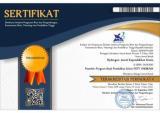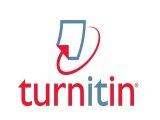Decoding The Obstacles of 10th Grade Student Learning in Atomic Structure at SMAN 1 Sungai Tarab
DOI:
https://doi.org/10.33394/hjkk.v11i6.10154Keywords:
analysis, types of learning difficulties, factors causing learning difficulties, percentage, chemistryAbstract
This research uses qualitative research methods (descriptive). The subjects of this research were 10th grade students of Phase E.8 with a total of 28 students. Based on the research that has been done, it can be concluded that the results of the analysis of the types of learning difficulties and the factors that cause chemistry learning difficulties in 10th Grade students of atomic structure material at State Senior High School (SMAN) 1 Sungai Tarab are as follows. First, the types of chemistry learning difficulties consist of 3 types of difficulties including difficulty understanding terms with the highest percentage of 67.86% on the term atomic symbol, difficulty understanding concepts with the highest percentage of 67.86% on the concept of atomic structure according to Thomson and difficulty understanding numbers with the highest percentage of 64.28% on calculations or numbers looking for the number of values of atomic constituent particles (ions). Second, the factors causing chemistry learning difficulties consist of 2 factors, namely internal factors which include physical factors with a percentage of 32.14%, psychological factors with a percentage of 82.14% and emotional factors with a percentage of 71.43%, and external factors which include family factors with a percentage of 25%, school factors with a percentage of 35.71% and community factors with a percentage of 28.57%.
References
Abdulkarim, K. A., & Suud, F. M. (2020). Evaluation of Madaris Curriculum Integration for Primary Muslim Education in Mindanao: An Assessment of the Influence of Psychology. International Journal of Islamic Educational Psychology. 1(2), 89-100.
Alang, H.M, Sattu. 2015. The Urgency of Diagnosis in Overcoming Learning Difficulties. Journal of Islamic Guidance and Counseling. 2(1)
Arifin, M. 2004. Teaching and Learning Strategy for Chemistry. Bandung. UPI.
Astuti, Fitri Nofita. 2020. Analysis of Students' Conceptual Understanding Difficulties in Solving Problems on Chance Material at MAN Sanggau. Journal of Mathematics Education. 2(2).
Azwar, Saifuddin. Research Methods. Yogyakarta: Student Library, 2001.Ristiyani, Erika. 2016. Analysis of Students' Chemistry Learning Difficulties in Sman X South Tangerang City. Journal of Science Research and Learning. 2 (1).
Amaliah, Marisa, Suardana, Nyoman. 2021. Analysis of Learning Difficulties and Factors Causing Science Learning Difficulties of Smp Negeri 4 Singaraja Students. Journal of Science Education and Learning. 4(1)
Astuti, Fitri Nofita. 2020. Analysis of Students' Conceptual Understanding Difficulties in Solving Problems on Chance Material at MAN Sanggau. Journal of Mathematics Education. 2(2).
Bennett, M. E. 1952. Problems of Self-Discovery and Self-Direction. New York. Mc-Graw Hill.
C.A. Tseng, C.P. Lee, Highly active carbon-based electrocatalysts for dye-sensitized solar cells: a brief review. Physics 2, 412–424 (2020)
C. Feng, G. Zhao, Y. Li, H. Cheng, Z.S. Wang, Single-crystal cobalt selenide nanobelt as a highly efficient cathode for stable quasi-solid-state dye sensitized solar cell. J. Power. Sources 426, 16–22 (2019)
E. Muchuweni, B.S. Martincigh, V.O. Nyamori, Recent advances in graphene-based materials for dye-sensitized solar cell fabrication. RSC Adv. 10, 44453–44469 (2020)
Fathalla, Karma M., Anikó Ekárt, and Doina Gherghel. 2018. Partially Lazy Classification of Cardiovascular Risk via Multi-Way Graph Cut Optimization. Procedia Computer Science.
F. Mousavi, M. Shamsipur, A.A. Taherpour, A. Pashabadi, A rhodium-decorated carbon nanotube cathode material in the dye- sensitized solar cell: conversion efficiency reached to 11%. Electrochim. Acta. Acta 308, 373–383 (2019)
Hamalik, Omear. 2015. Curriculum and Learning. Jakarta: Bumi Aksara.
Hartantia, R., E.S.V. Hayus, and A.N.C. Suparto. 2013. Application of Creative Problem Solving (CPS) Model to Increase Interest and Chemical Learning Outcomes in Thermochemistry Subject Matter of Students of Class XI.IA2 Sma Negeri Colomadu in 2012/2013 Academic Year. Journal of Chemical Education (Jpk). 2(2).Hill, Andrew J., and Daniel B. Jones. 2018. A Teacher Who Knows Me: The Academic Benefits of Repeat Student-Teacher Matches. Economics of Education.
Indreica, Elena-Simona, Ana-Maria Cazan, and Camelia Truta. 2011. Effects of Learning Styles and Time Management on Academic Achievement. Procedia -Social and Behavioral Sciences.
Gao, Heming, Mingming Qi, and Qi Zhang. 2019. Forgetting Cues Are Ineffective in Promoting Forgetting in the Item-Method Directed Forgetting Paradigm. International Journal of Psychophysiology.
J.V. Vaghasiya, K.K. Sonigara, S.S. Soni, Role of metal oxides as photoelectrodes in dye-sensitized solar cells, chap, in Advances in Metal Oxides and Their Composites for Emerging Applications. (Elsevier, 2022), pp.287–338
Keenan, C.W., Kleinfelter, D.C., and Wood, J.H., 1980, Chemical Science for Universities, Volume I, Sixth Edition, Erlangga, Jakarta.
K. Tuharin, Z. Turek, M. Zanáška, P. Kudrna, M. Tichý, Iron oxide and iron sulfide films prepared for dye-sensitized solar cells. Materials 13, 1797 (2020)
Larasati, M., Fibonacci, A., & Wibowo, T. (2018). Pengembangan modul berbasis problem based learning pada materi polimer kelas XII SMK ma’arif nu 1 sumpiuh. Jurnal Tadris Kimiya, 3(1), 32-41. https://doi.org/10.15575/jtk.v3i1.2038
Ljusberg, A.-L. 2011. Children’s Views on Attending a Remedial Class - Because of Concentration Difficulties. Child: Care, Health and Development 37 (3): 440–45.
M.A. Ramli, E.R. Mawarnis, M.I.A. Umar, S.K.M. Saad, M.Y.A. Rahman, M. Nurdin, A.A. Umar, Charge transfer uplift in dye-sensitized solar cells using fibrous nanocrystals of platinum-based bimetallic counter electrodes. Surf. Interf. 26, 101311 (2021)
M.S. Rahman, W.A. Hammed, R.B. Yahya, H.N. Muhammad, E. Mahmud, Prospects of conducting polymer and graphene as counter electrodes in dye-sensitized solar cells. J. Poly. Res. 23, 192 (2016)
Mariyani, A., Rofiq, M. A., & Tiantoko, T. I. (2022). Development Of Informatics Technology And Computer Book Based On 4d Models.In UICELL Conference Proceeding, 5, 362-371.Retrieved from https://journal.uhamka.ac.id/index.php/uicell/article/view/8393
Mawarnis, E. R. (2021). Kimia Dasar II.Deepublish.
Makmun, Abin Syamsuddin. 2007. Educational Psychology Module Teaching System. Bandung: PT Remaja Rosdakarya.
Mudarawan, I Wayan, et al. Analysis of Factors Causing Student Learning Difficulties in Solubility and Potassium Solubility Materials. Indonesian Journal of Chemical Education. 3(1).
Mukhtar. 2013. Practical Methods of Qualitative Descriptive Research. Jakarta: Gp Press Group.
Muri, Yusuf. 2014. Quantitative, Qualitative & Combined Research Methods. Jakarta: Kencana.
N.A.S. Aziz, M.Y.A. Rahman, A.A. Umar, Comparative study of dye-sensitized solar cell utilizing selenium and palladium cathode. J. Indian Chem. Soc. 99, 100289 (2022)
N.A.S. Aziz, M.Y.A. Rahman, A.A. Umar, Palladium selenide as cathode for dye-sensitized solar cell: effect of palladium content. Sol. State Electron. 190, 108255 (2022)
Nipa, T. J., & Kermanshachi, S. (2020). Assessment of open educational resources (OER) developed in interactive learning environments. Education and Information Technologies, 25(4), 2521-2547. https://doi.org/10.1007/s10639-019-10081-7
Nurdyansyah, N. (2018). Pengembangan Bahan Ajar Modul Ilmu Pengetahuan Alambagi Siswa Kelas Iv Sekolah Dasar. Universitas Muhammadiyah Sidoarjo. Retrieved from http://eprints.umsida.ac.id/id/eprint/1607
Nurhidayah, Mardiati. 2022. Analysis of Learning Difficulties in Learning Using Google Classroom and Its Correlation with Student Chemistry Learning Outcomes. Journal Chemistry Education Practice. 5 (2)
O’Shea, Amber, Julie L. Booth, Christina Barbieri, Kelly M. McGinn, Laura K. Young, and Melissa H. Oyer. 2017. Algebra Performance and Motivation Differences for Students with Learning Disabilities and Students of Varying Achievement Levels. Contemporary Educational Psychology.
P.V. Rajeev, S. Gnanasekar, K. Gothandapani, R. Sellapan, G. Jacob, V. Raghavan, S. Pitchaimuthu, P. Sonar, N.K. Chandar, S.K. Jeong, M. Ahamad, S. Pandiraj, M. Ramamorthy, A.N. Grace, Thermal decomposition derived nano molybdenum nitride for robust counter electrode in dye-sensitized solar cells. Mater. Today Comm. 26, 102070 (2021)
Prayunisa, Fena. 2022. Analysis of Class Xi Students' Difficulties in Learning Chemistry at Sman 1 Masbagik. Journal of Classroom Action Research. 4(3)
Q. Yang, P. Yang, J. Duan, X. Wang, L. Wang, Z. Wang, Q. Tang, Ternary platinum alloy counter electrodes for high-efficiency dye-sensitized solar cells. Electrochim. Acta. Acta 190, 85–91 (2016)
Ristiyani, Erika. 2016. Analysis of Students' Chemistry Learning Difficulties in Sman X South Tangerang City. Journal of Ipa Research and Learning. 2(1)
S.A. Salleh, M.Y.A. Rahman, T.H.T. Aziz, Dye-sensitized solar cell using nickel sulphide-reduced graphene oxide counter electrode: effect of sulphur content. Inorg. Chem. Comm. 135, 109086 (2022)
Simonson, M., Zvacek, S. M., & Smaldino, S. (2019). Teaching and learning at a distance: Foundations of distance education 7th edition. Information Age Publishing,Sothy, K., Chantha, C., Sambath, H., & Siriwat, C. (2022). Teaching and Learning Chemistry at a Public University: Practices and Challenges. Cambodian Post-Secondary Education and Training in the Global Knowledge Societies, 325. Retrieved from https://journalppw.com/index.php/jpsp/article/view/13764Taber, K. S. (2018). The use of Cronbach’s alpha when developing and reporting research instruments in science education. Research in science education, 48(6), 1273-1296. https://doi.org/10.1007/s11165-016-9602-2
Sitinjak, Labora. 2016. Internal and External Factors Affecting Learning Difficulties of Semester IV Students of Akper Husada Karya Jaya Academic Year 2015/2016. Journal of Husada Karya Jaya Nursing Academy. 2(2)
Sudjhana, Nana and Ibrahim. 2001. Educational Research and Assessment. Bandung: Sinar Baru.
Sugiyono. 2006. Quantitative Research Methods, Qualitative and R & D. Bandung: Alfabeta.
Shahbana, E. B., Kautsar farizqi, F., & Satria, R. (2020). Implementation of Behavioristic Learning Theory in Learning. Journal of Serunai Educational Administration, 9(1), 24-33. https://doi.org/10.37755/jsap.v9i1.249
Tohirin.2008. Guidance and Counseling in Schools and Madrasahs (Integral Based). Jakarta: Pt Raja Grafindo Persada.
Widya, Hilalia Iswara. (2021). Identification of Chemical Learning Difficulties During the Covid-19 Pandemic of Class XII MIPA Students of SMA Negeri 1 Narmada in the 2020/2021 Academic Year. Chemistry Education Practice, 4 (3)
Thiagarajan. (1974). Instructional development for training teachers of exceptional children. Indiana University.
U.A. Kamarulzaman, M.Y.A. Rahman, M.S. Suait, A.A. Umar, NickelPalladium alloy-reduced graphene oxide as counter electrode for dye-sensitized solar cells. J. Mol. Liq. 326, 115289 (2021)
Wayan Suja, I. (2015). The Use of Analogy in Chemistry Learning. JPI (Indonesian Journal of Education), 3(2), 397-410. https://doi.org/10.23887/jpi-undiksha.v3i2.4457
Widiyaningsih, U., Fatah, A. H., & Syarpin, S. (2020). Development of Learning Multimedia Using Lectora Inspire Based on Multiple Representations on Chemical Equilibrium Material. Kanderang Tingang Scientific Journal, 11(1), 92-101. https://doi.org/10.37304/jikt.v11i1.78
Yakina. 2017. Analysis of Student Learning Difficulties in Class X Chemistry Subjects at Sma Negeri 1 Sungai Ambawang. Ar-Razi Scientific Journal. 5(2)
Yulanda, A.-. (2020). M. Amin Abdullah's Integrative-Interconnective Scientific Epistemology and its Implementation in Islamic Science. TAJDID: Journal of Ushuluddin Science, 18(1), 79-104. https://doi.org/10.30631/tjd.v18i1.87
Downloads
Published
How to Cite
Issue
Section
Citation Check
License
License and Publishing Agreement
In submitting the manuscript to the journal, the authors certify that:
- They are authorized by their co-authors to enter into these arrangements.
- The work described has not been formally published before, except in the form of an abstract or as part of a published lecture, review, thesis, or overlay journal.
- That it is not under consideration for publication elsewhere,
- That its publication has been approved by all the author(s) and by the responsible authorities – tacitly or explicitly – of the institutes where the work has been carried out.
- They secure the right to reproduce any material that has already been published or copyrighted elsewhere.
- They agree to the following license and publishing agreement.
Copyright
Authors who publish with Hydrogen: Jurnal Kependidikan Kimia agree to the following terms:
- Authors retain copyright and grant the journal right of first publication with the work simultaneously licensed under a Creative Commons Attribution License (CC BY-SA 4.0) that allows others to share the work with an acknowledgment of the work's authorship and initial publication in this journal.Â
- Authors are able to enter into separate, additional contractual arrangements for the non-exclusive distribution of the journal's published version of the work (e.g., post it to an institutional repository or publish it in a book), with an acknowledgment of its initial publication in this journal.
- Authors are permitted and encouraged to post their work online (e.g., in institutional repositories or on their website) prior to and during the submission process, as it can lead to productive exchanges, as well as earlier and greater citation of published work.
Licensing for Data Publication
Hydrogen: Jurnal Kependidikan Kimia uses a variety of waivers and licenses, that are specifically designed for and appropriate for the treatment of data: Open Data Commons Attribution License, http://www.opendatacommons.org/licenses/by/1.0/ (default) Other data publishing licenses may be allowed as exceptions (subject to approval by the editor on a case-by-case basis) and should be justified with a written statement from the author, which will be published with the article.









